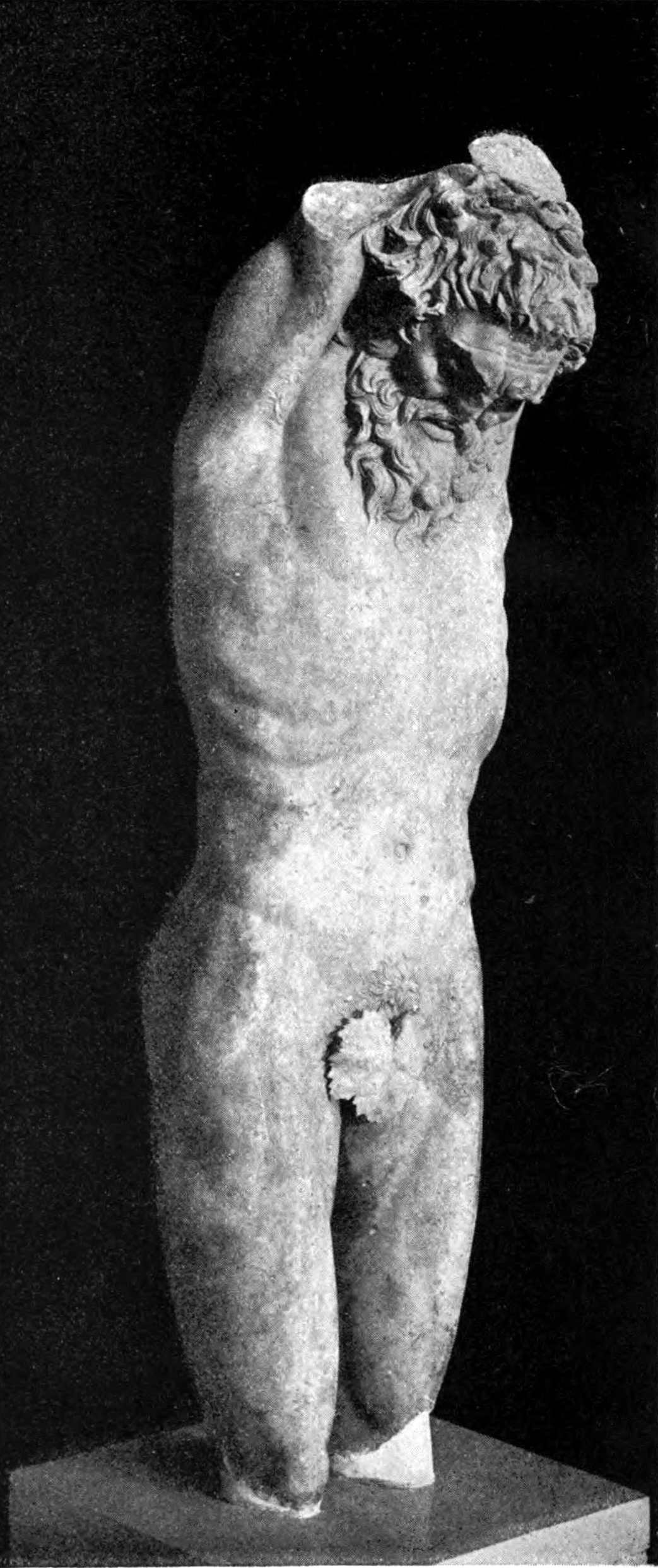Transcriber’sNote
Larger versions of most illustrationsmay be seen by right-clicking them andselecting an option to view them separately, or by double-tappingand/or stretching them.
HELLENISTIC
SCULPTURE


HELLENISTIC
SCULPTURE
BY
GUY DICKINS, M.A.
SOMETIME FELLOW AND LECTURER OF ST. JOHN’S COLLEGE, OXFORD
AND LECTURER IN CLASSICAL ARCHAEOLOGY IN THE UNIVERSITY OF OXFORD
WITH A PREFACE
BY
PERCY GARDNER, Litt.D., F.B.A.
LINCOLN AND MERTON PROFESSOR OF CLASSICAL
ARCHAEOLOGY IN THE UNIVERSITY OF OXFORD
OXFORD
AT THE CLARENDON PRESS
1920
INTRODUCTORY NOTE
Guy Dickins wrote these chapters on HellenisticSculpture as a brief sketch of the period to which hehoped to devote years of study. They foreshadowsome of the theories which he intended to work out, and forthat reason we believe that they will be useful to the student.There are obvious omissions, but no attempt has been madeto fill up gaps in the manuscript, such as paragraphs on theBarberini Faun or the Attic Gaul, which were left blank in1914.
The illustrations, which naturally must be limited innumber, have been selected by me mainly on the principleof reproducing the less accessible pieces of sculpture whilegiving references to standard works for the others.
In preparing my husband’s manuscript for publicationI have to acknowledge with gratitude the help of manyfriends. To Professor Percy Gardner I am particularlyindebted for valuable advice and for his kindness in writinga preface to the volume; to Miss C. A. Hutton for hercounsel throughout; and to Mr. Alan Wace for sendingme photographs from Athens. I have also to thank theHellenic Society, the Committee of the British School atAthens, and Dr. Caskey of the Boston Museum for permissionto reproduce certain photographs.
MARY DICKINS.
Oxford, March, 1920.
vii
PREFACE
Among the losses which Oxford has suffered from thewar, none is more to be regretted than that of theauthor of this volume. As an undergraduate, twentyyears ago, Guy Dickins gave up his intention of entering theIndian Civil Service in order to devote himself to the studyof Classical Archaeology, an allegiance from which he neverswerved. In 1904 he went as Craven Fellow to the BritishSchool of Athens, and for five years lived mostly in Greece,studying and exploring. In 19